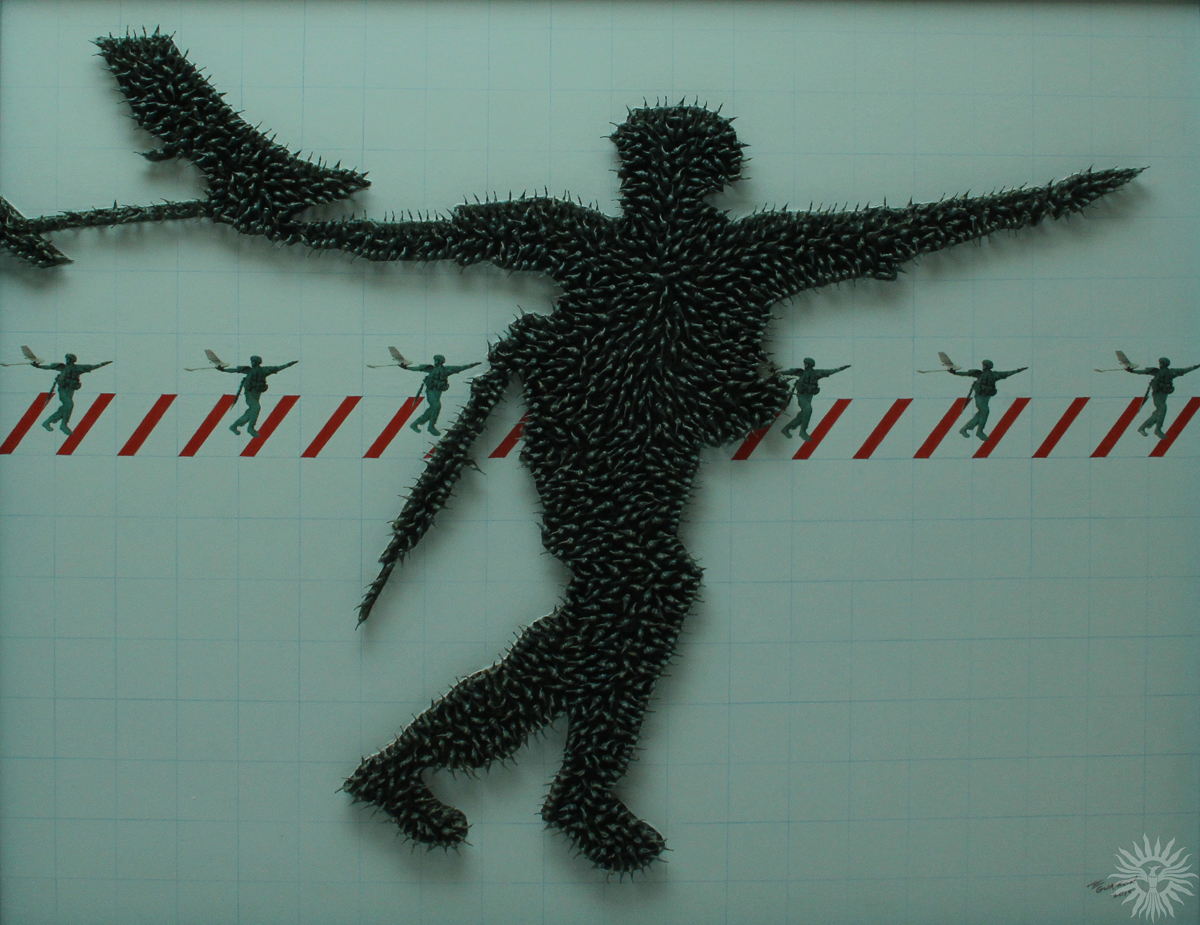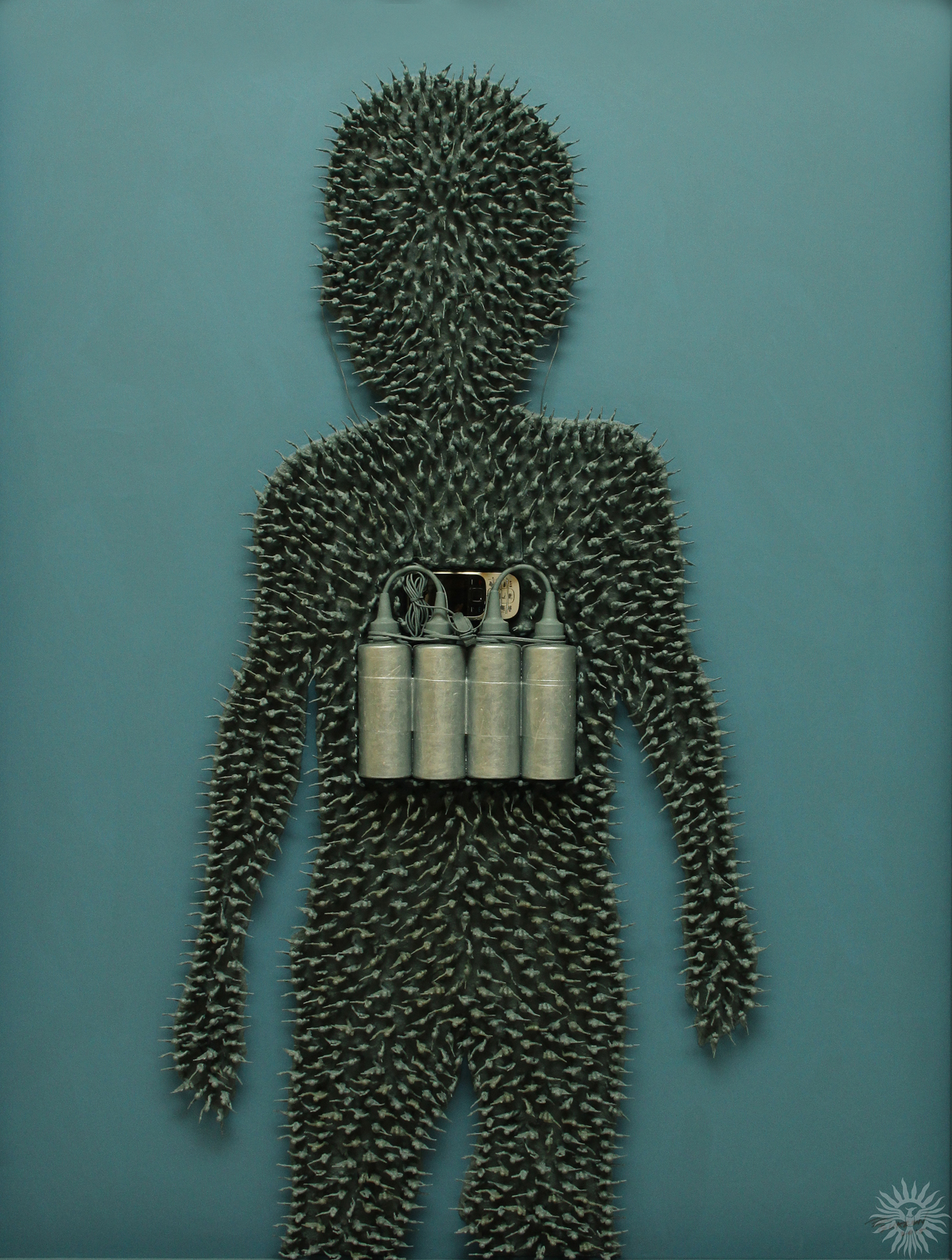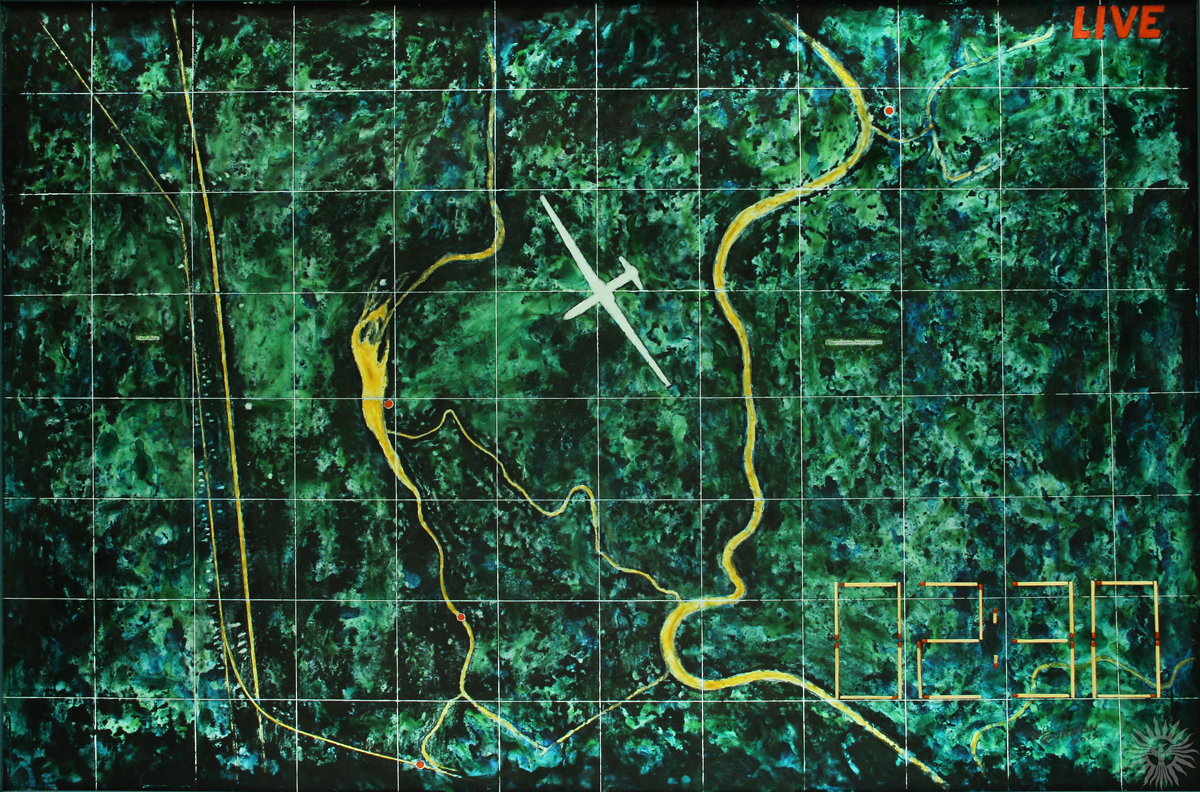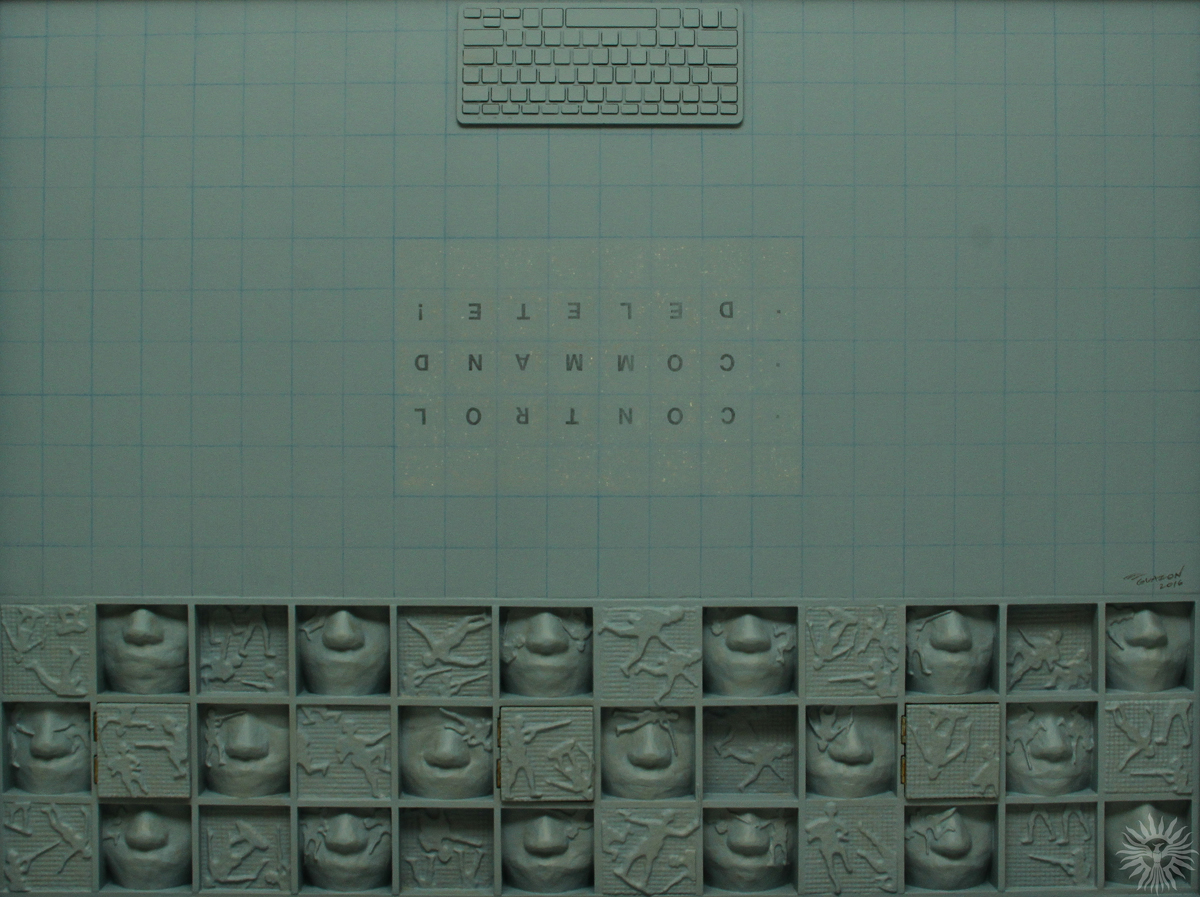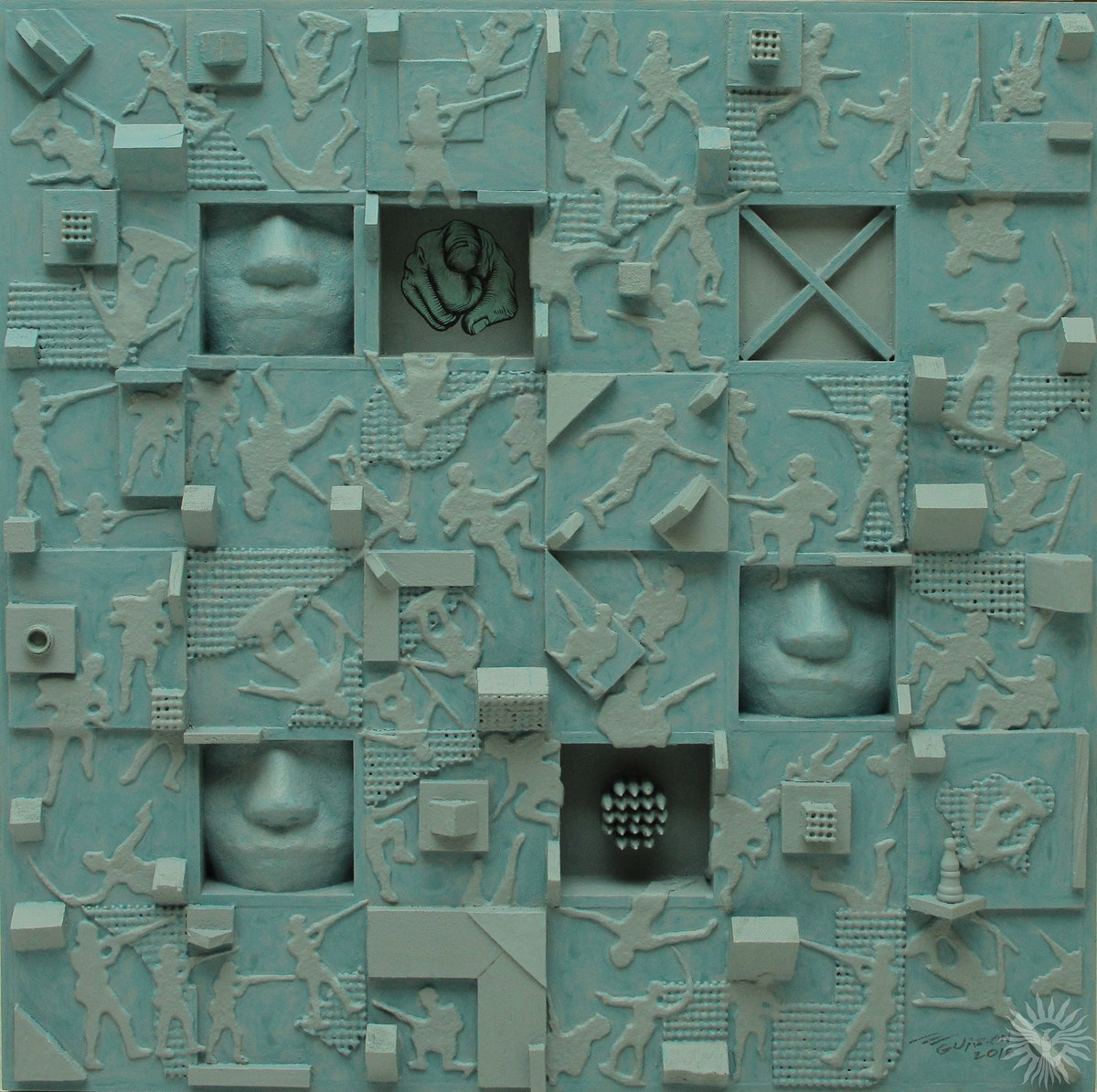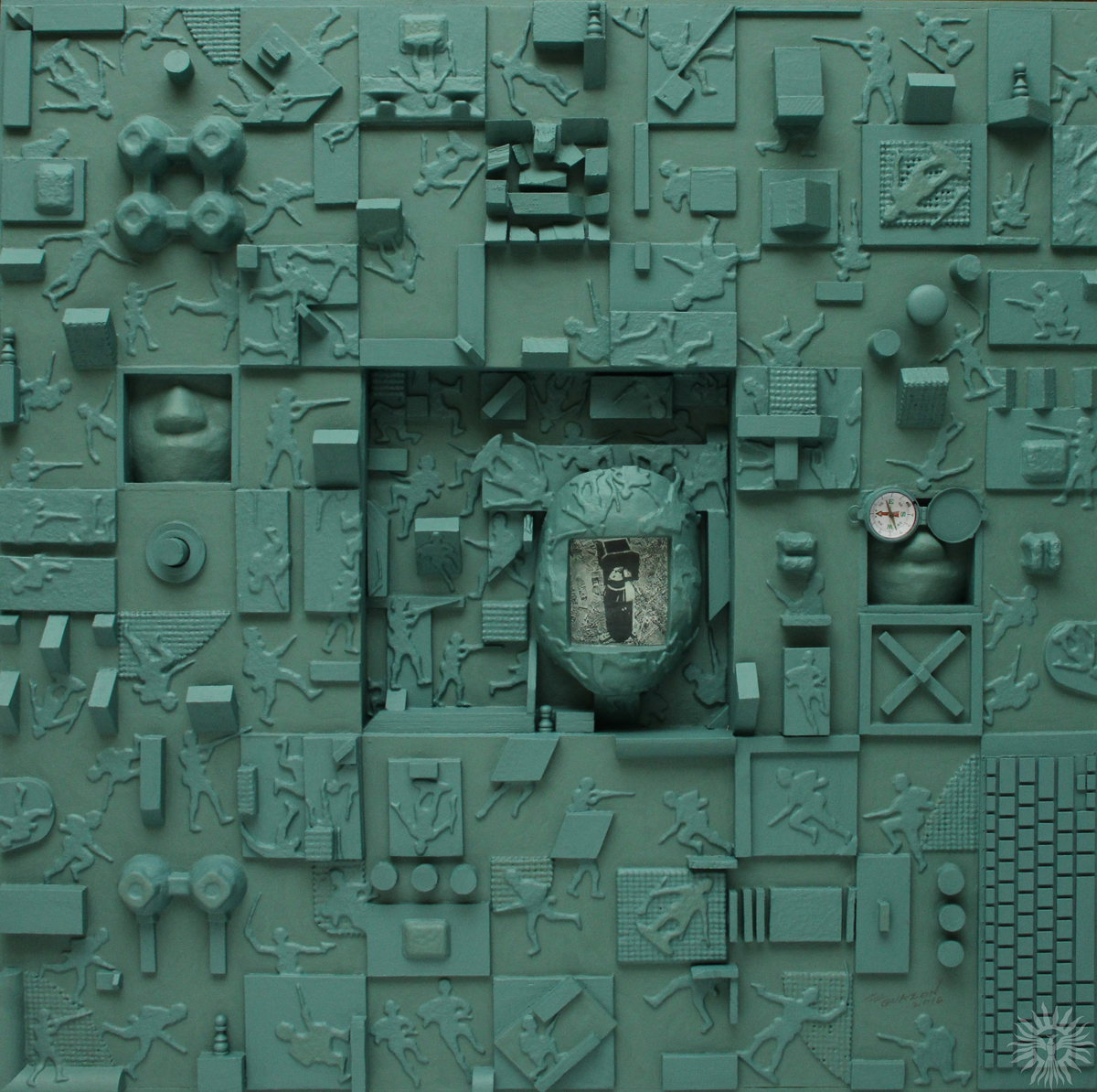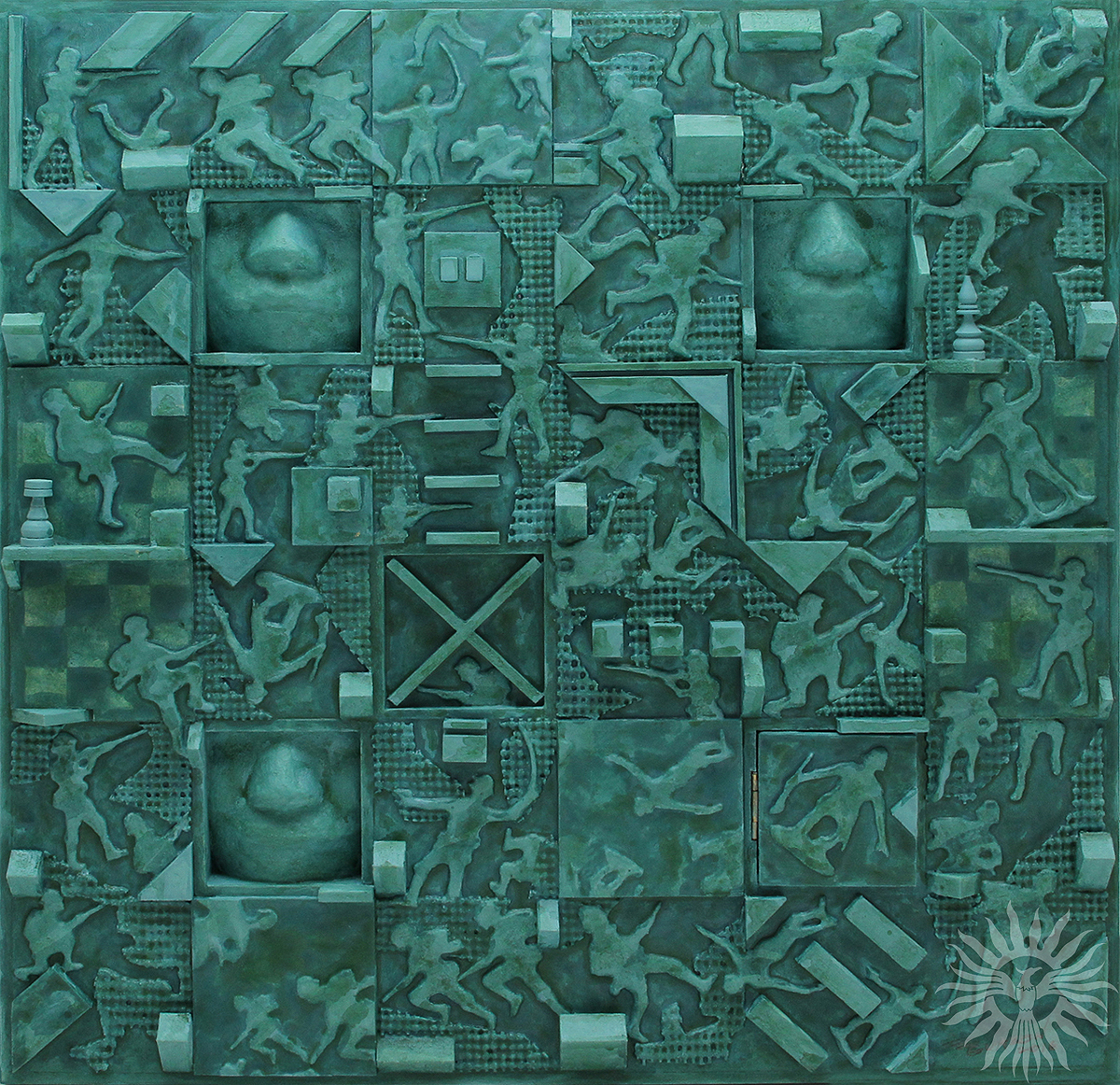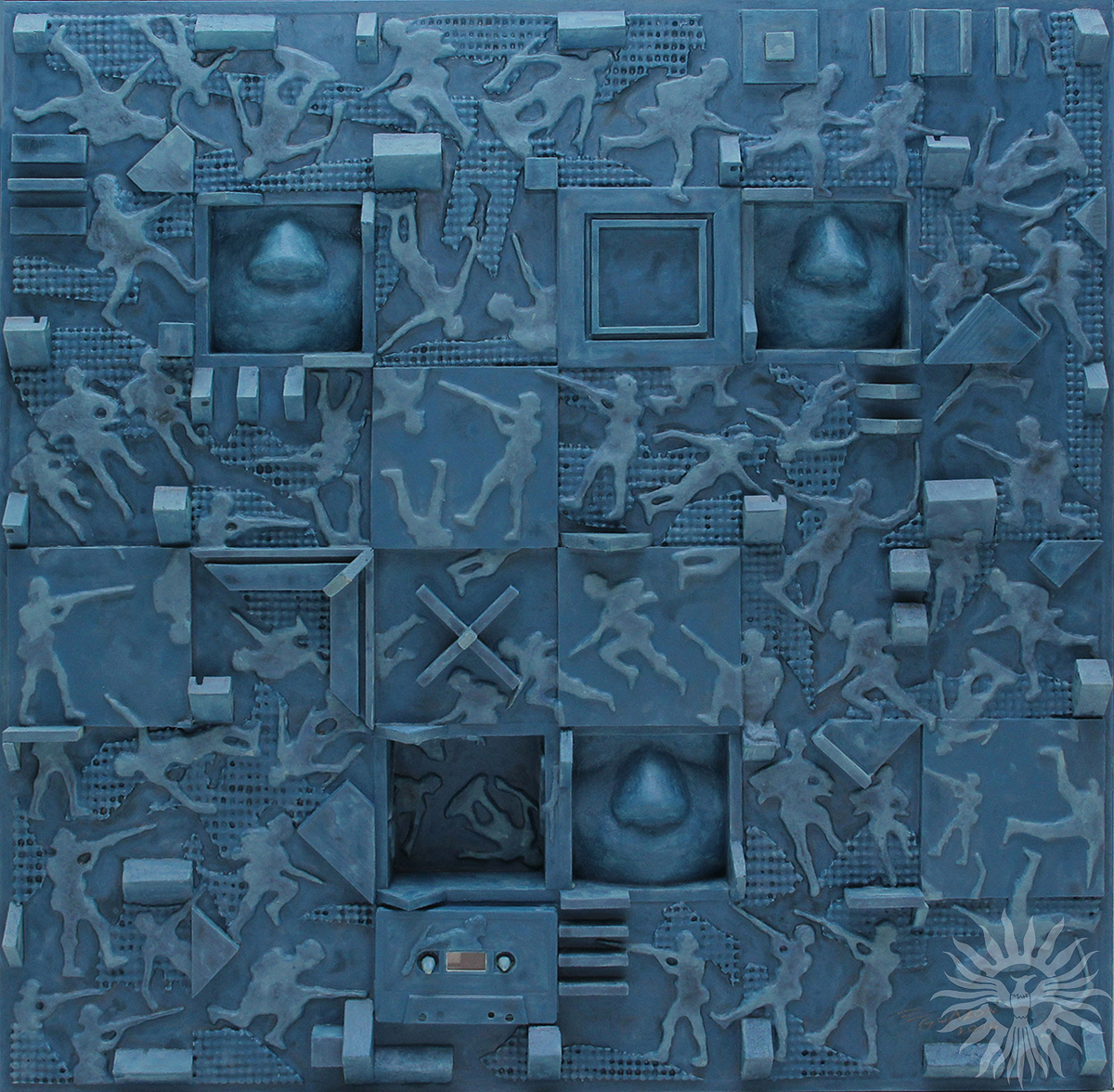My Shadow Will Fly To Heaven
April 16, 2016 - June 12, 2016
Eric Guazon
Hiraya Gallery
“Freedom is the right of individuals to act as they choose. Our freedom is taken away from us when terrorism strikes. Terrorism implants fear into the minds of all and disrupts our everyday actions. On September 11, 2001 a tragedy occurred in New York City at the World Trade Center. Two hijacked airplanes were flown straight into the twin towers killing over 6,000 people and injuring the minds of all Americans. This violent act of terrorism was masterminded by the Al-Qaida leader Osama Bin Laden. Terrorism has been with us for as long as people remember, but it has been on the rise for the past ten years.”
Thus, wrote an American teen-ager in high school for an essay assignment on the event that changed the course of their life, and indeed, that of all freedom-loving citizens of the world. Touchingly, the writing, though simply reportorial in intent, has the tone of a wide-eyed innocence brutalized into an awareness that their now damaged world is no longer the safe haven that they had known it to be. In the wake of the recent Paris and Brussels terrorist attacks, we have been made conscious and gripped by an insidious fear that our lives now teeter between good and evil: but just exactly who is on which side depends on whoever is the viewer. Through the Western media, an exotic, foreign-sounding word, jihad, has entered the lexicon, adverting to a Holy War that a segment of the Muslim world is waging against the West. The root word of jihad is jee ha da, which literally means to struggle or strive. Jihad then is “the struggling or striving in the way or sake of Allah.” And thus, according to the Quran, a martyr who dies in the way of Jihad is promised Jannah or Paradise.
Muslim polemicists, however, insist that “Jihad has nothing to do with the term Holy War. Such a term, or its equivalent, does not exist in the Islamic doctrine.” Turning the table around, they in fact accuse that the Christian Crusades, in the mid-ages, invented this ideology of Holy War.
Such is the fascinating background that enlightens our understanding of an art show now on view at the Hiraya Gallery. Titled “My Shadow Will Fly To Heaven” these recent works by Eric Guazon constitute a visual meditation on the meaning and consequences of armed conflict between states and ideologies. Writes the artist: “The exhibition looks at the many dimensions of war. The technologies of war are founded on the visible and material as well as that which is intangible.”
There Is an ironic orderliness and formality in Guazon’s use of the grid that aggressively satirizes the shattering destructiveness and horrific chaos of warfare. Paramount is the allusion, indeed the use in relief, of the children’s plastic soldier toys, as though war were merely child’s play. Have we been so inured to scenes of death and destruction, a desolation that lays to waste peoples and countries, that we have invested them with these Pop paraphernalia, feeding on our fantasies of war which we all watch in the safety of our homes, glued to our television sets? Indeed, a Pop masterpiece of the Sixties is Roy Lichtenstein’s “WHAAAM!!” A magnified and stylized frame from a comics strip with its appetite for BenDay dots that screen the real horror of war, it was painted during the Vietnam War, the first ever televised war in real time. Its timeliness is equivalent to Picasso’s outrage when he painted in 1937 the destruction by German and Italian warplanes of the Basque town Guernica during the Spanish civil war.
And as “Guernica” was dominated by a palette of gray, black and white, so too are Guazon’s works bathed in a pale monochrome of gun-metallic grays, like an enveloping leaden sky. His battlefields, titled “Bombsites,” are a top-view arena of conflict, with the multitude of relief figures sprawled on the battle ground, a veritable graveyard, certainly site-specific, in fact, viewed by “presences and shadows,” per the artist’s avowed themes. Strategically placed and hollowed out from the pictorial surface are the apertures, inside which are the hooded visages of the jihadists, the suicide bombers, who, if we are to subscribe to their beliefs, are now in paradise, looking down from their heavenly perch with unabashed delight. Indeed, the title piece of the show, “My Shadow Will Fly To Heaven,” adverts to the drones, those dangerous flying robots, unmanned aerial vehicles of surveillance and destruction, like their souls ecstatically soaring to their just reward.
A word need be said about the execution of these works: their craftsmanship, so smoothly and elegantly the wonders of the lathe machine, commands attention for their flawless execution. The deployment of the relief figures, while looking so arbitrarily strewn, have the rhythmic spontaneity of notes strung on a stave. It is as though Guazon drilled his relief figures, treating them as human emblems, with disciplined precision. They have been transformed into the artist’s own aesthetic weaponry, and be they jihadists or war troops in Afghanistan, Syria or Iraq, they are tragic automatons blindly responding at the behest of their leaders.
And while on the subject of the blind leading the blind: should we not acknowledge the blind Bulgarian mystic, Vangelia Pandeva Dimitrova? She it was who, in 1989, predicted the attack on the American twin towers, wailing: “ Horror, horror! The American brethren will fall after being attacked by the steel birds. The wolves will be howling in a bush, and innocent blood will be gushing.” Alas, more horror awaits the world: Vangelia has also predicted for 2016: “Muslims will invade Europe!” After the relentless terrorist attacks in Madrid, London, Paris, and now Brussels: are we not concerned that more shadows will be flying to the heavens?
At the Hiraya Gallery, Eric Guazon has given us a show that should give us pause.
------
Cid Reyes is the author of coffeetable books on National Artists Arturo Luz, BenCab, J. Elizalde Navarro, and Napoleon V. Abueva. He received a Best in Art Criticism award from the Art Association of the Philippines (AAP).
